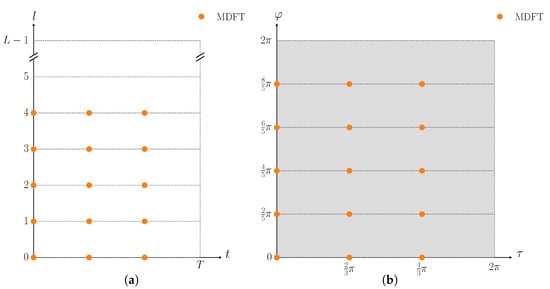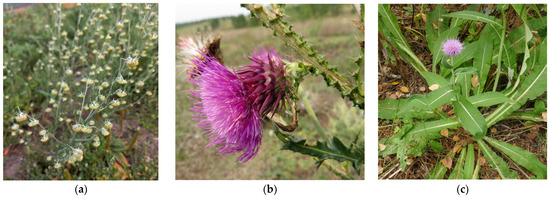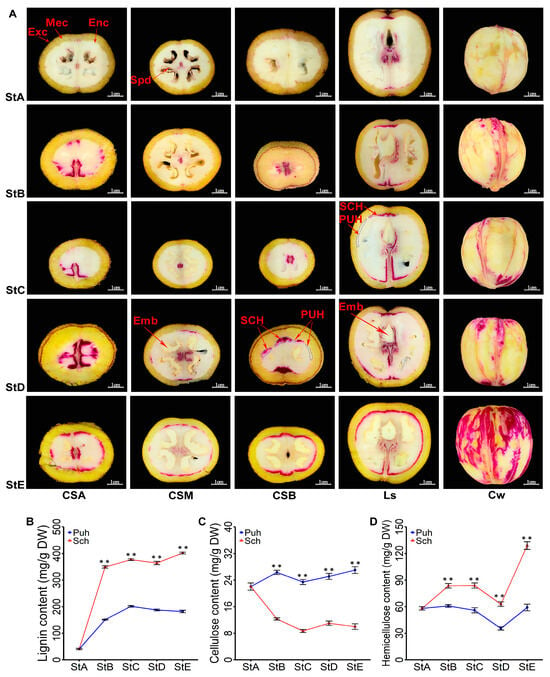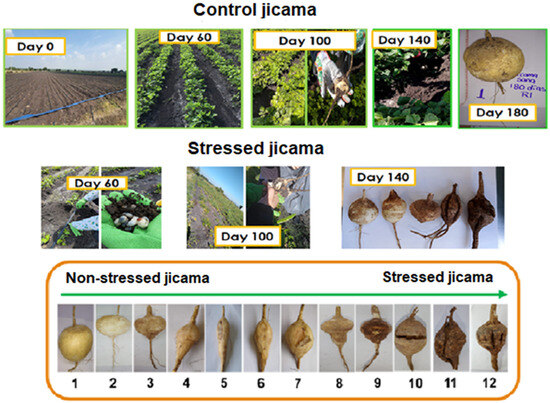The Asteraceae family in Siberian Asia exhibits remarkable biodiversity and has long served as a valuable resource for domesticating various beneficial plants with medicinal, therapeutic, and industrial significance to humanity. In this work, we studied for the first time the chemical composition of
[...] Read more.
The Asteraceae family in Siberian Asia exhibits remarkable biodiversity and has long served as a valuable resource for domesticating various beneficial plants with medicinal, therapeutic, and industrial significance to humanity. In this work, we studied for the first time the chemical composition of six understudied or previously unexplored plant species,
Artemisia jacutica (AJ),
Carduus nutans subsp.
leiophyllus (CL),
Cirsium heterophyllum (CH),
Echinops davuricus (ED),
Ixeris chinensis subsp.
versicolor (IV), and
Lactuca sibirica (LS), which were successfully cultivated under open-field conditions as biennial or perennial crops. We profiled these species, employing a liquid chromatography–mass spectrometry approach, identifying over 100 phenolic compounds. Among these compounds were hydroxybenzoic acid glucosides, hydroxybenzoyl/
p-coumaroyl/feruloyl quinic acids, hydroxycoumarin
O-glucosides, caffeoyl/
p-coumaroyl/feruloyl glucaric/tartaric acids,
O- and
C-glucosides of apigenin, acacetin, luteolin, chrysoeriol, 6-hydroxyluteolin, pectolinarigenin, kaempferol, quercetin, isorhamnetin, and tri-/tetra-
O-
p-coumaroyl spermines and spermidines. All examined species exhibited a significant accumulation of phenolic compounds throughout the experimental period, reaching levels comparable to or exceeding those found in wild samples (WSs), with the best total phenolic content for AJ at 26.68 mg/g (vs. 26.68 mg/g in WS; second year), CL at 50.23 mg/g (vs. 38.32 mg/g in WS; second year), CH at 51.14 mg/g (vs. 40.86 mg/g in WS; sixth year), ED at 86.12 mg/g (vs. 78.08 mg/g in WS; seventh year), IV at 102.49 mg/g (vs. 88.58 mg/g in WS; fourth year), and LS at 127.34 mg/g (vs. 110.64 mg/g in WS; fifth year). Notably, in the first year of cultivation, approximately 40–60% of the wild-level target compounds accumulated in the plants, with even higher levels detected in subsequent years, particularly in the second and third years. This study highlights the potential of cultivation to produce new Asteraceae plants rich in bioactive phenolics.
Full article
 IJMS
IMPACT
IJMS
IMPACT Applied Sciences
IMPACT
Applied Sciences
IMPACT Sustainability
IMPACT
Sustainability
IMPACT Sensors
IMPACT
Sensors
IMPACT JCM
IMPACT
JCM
IMPACT Materials
IMPACT
Materials
IMPACT Molecules
IMPACT
Molecules
IMPACT Energies
IMPACT
Energies
IMPACT Electronics
IMPACT
Electronics
IMPACT Remote Sensing
IMPACT
Remote Sensing
IMPACT Cancers
IMPACT
Cancers
IMPACT Nutrients
IMPACT
Nutrients
IMPACT Mathematics
IMPACT
Mathematics
IMPACT Foods
IMPACT
Foods
IMPACT Buildings
IMPACT
Buildings
IMPACT Polymers
IMPACT
Polymers
IMPACT Animals
IMPACT
Animals
IMPACT Water
IMPACT
Water
IMPACT Plants
IMPACT
Plants
IMPACT Agronomy
IMPACT
Agronomy
IMPACT Biomedicines
IMPACT
Biomedicines
IMPACT Processes
IMPACT
Processes
IMPACT Microorganisms
IMPACT
Microorganisms
IMPACT Diagnostics
IMPACT
Diagnostics
IMPACT Nanomaterials
IMPACT
Nanomaterials
IMPACT Viruses
IMPACT
Viruses
IMPACT Medicina
IMPACT
Medicina
IMPACT Healthcare
IMPACT
Healthcare
IMPACT Cells
IMPACT
Cells
IMPACT Forests
IMPACT
Forests
IMPACT Agriculture
IMPACT
Agriculture
IMPACT Land
IMPACT
Land
IMPACT JMSE
IMPACT
JMSE
IMPACT IJERPH
IJERPH
 Symmetry
IMPACT
Symmetry
IMPACT Genes
IMPACT
Genes
IMPACT Pharmaceutics
IMPACT
Pharmaceutics
IMPACT Coatings
IMPACT
Coatings
IMPACT Micromachines
IMPACT
Micromachines
IMPACT Pharmaceuticals
IMPACT
Pharmaceuticals
IMPACT Atmosphere
IMPACT
Atmosphere
IMPACT Children
IMPACT
Children
IMPACT Religions
IMPACT
Religions
IMPACT Antioxidants
IMPACT
Antioxidants
IMPACT Life
IMPACT
Life
IMPACT Metals
IMPACT
Metals
IMPACT Biomolecules
IMPACT
Biomolecules
IMPACT Vaccines
IMPACT
Vaccines
IMPACT Education Sciences
IMPACT
Education Sciences
IMPACT Minerals
IMPACT
Minerals
IMPACT Horticulturae
IMPACT
Horticulturae
IMPACT Brain Sciences
IMPACT
Brain Sciences
IMPACT JPM
IMPACT
JPM
IMPACT Bioengineering
IMPACT
Bioengineering
IMPACT























